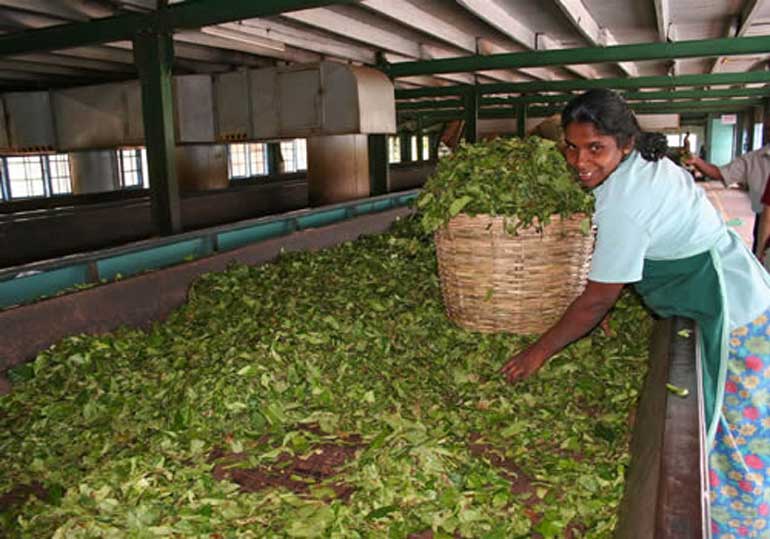Saturday Dec 14, 2024
Saturday Dec 14, 2024
Friday, 5 February 2016 00:00 - - {{hitsCtrl.values.hits}}

Sri Lanka’s tea exports in 2015 both in volume and value declined over 2014 whilst prospects for 2016 could be challenging, according to John Keells Plc.
It said total export volume for 2015 recorded 307 Mkgs, which was 6.4% lower when compared to 2014 largely due to the lower production during the year.
Export earnings too recorded a significant drop of 16%.
The unit FOB value of Sri Lankan exports at Rs.593.11 shows a negative variance of Rs.56.33 compared to the corresponding period of last year. With a lower export volume and lower unit FOB value the export earnings in 2015 at Rs. 182 billion is lower by Rs. 30 billion when compared to 2014.
Russia maintained the leading export destination for Sri Lanka having imported 36.7 Mkgs. ,followed by Turkey at 33.7 Mkgs and Iraq at 31.4 Mkgs. Whilst Russia and Turkey registered drops in exports of 7.4Mkgs and 11Mkgs respectively, exports to Iraq increased by 6.6 Mkgs. Most other export destinations too registered lower export volumes during the year with the exception of Azerbaijan.
John Keells Plc also said tea is the most consumed beverage in the world after water. But the drink, which is the mainstay of many cultures, is subject to the same volatile market forces as oil or gold.
Sri Lanka is the world’s fourth largest exporter of tea, behind China, India and Kenya, and relies on the industry to employ formally and informally one million of its 20.6 million people, according to the Sri Lanka Tea Board. Tea accounts for 17% of Sri Lanka’s exports.
The largest importer of Ceylon tea is Russia and other members for the Commonwealth of Independent States. Turkey, Iran, Iraq and Syria were some of the biggest consumers of Sri Lankan tea, and conflict in these areas has put a strain on the industry, according to the Tea Board report.
China’s recent economic troubles, as well as low oil prices in another large importer, the United Arab Emirates, mean that tea exports could face another hit in 2016.
“Market analysts observe, however, that there is significant growth in tea consumption in large markets such as the United States, where health-conscious consumers are looking for better alternatives to sugary fizzy drinks and young, wealthy millennials are showing interest in specialty teas. There is also growing demand for “ready-to-drink” tea products,” the John Keells Plc said.